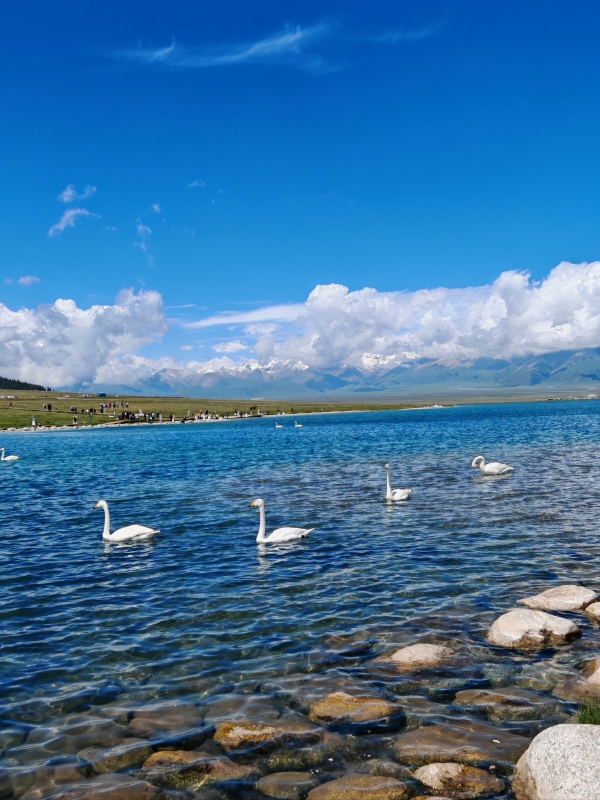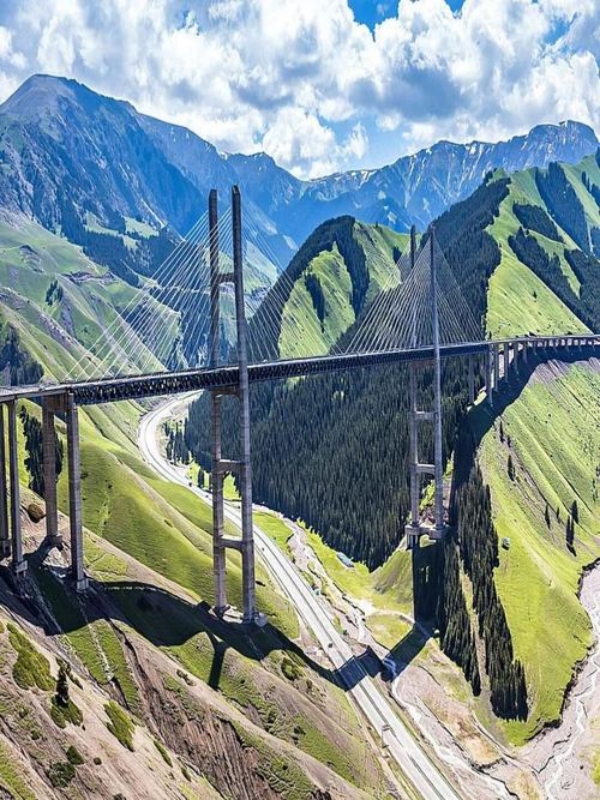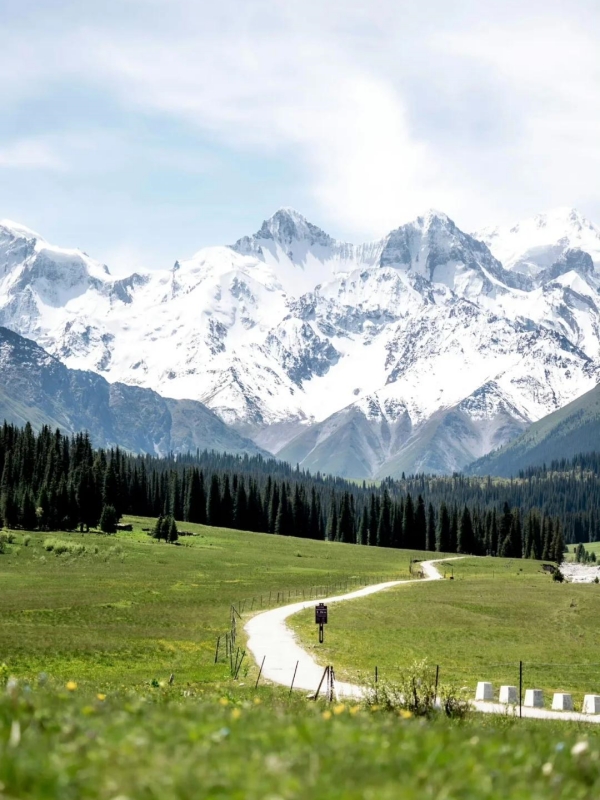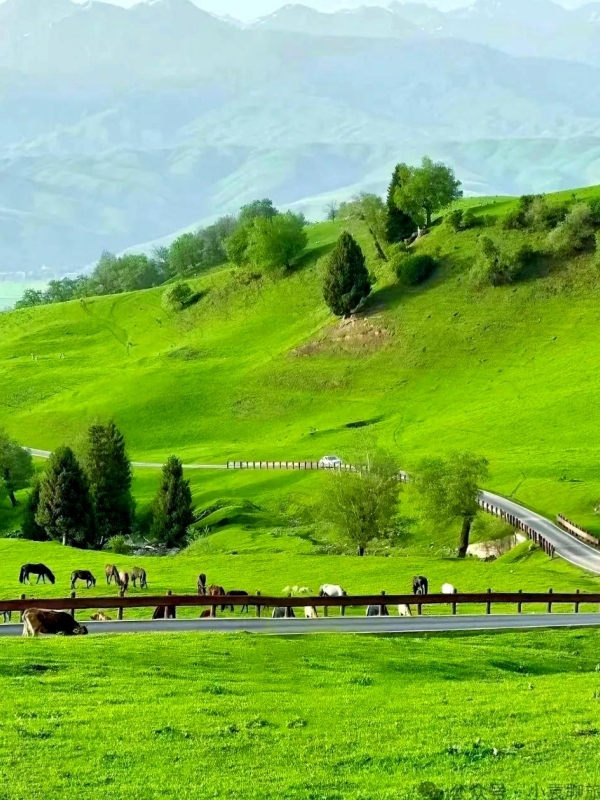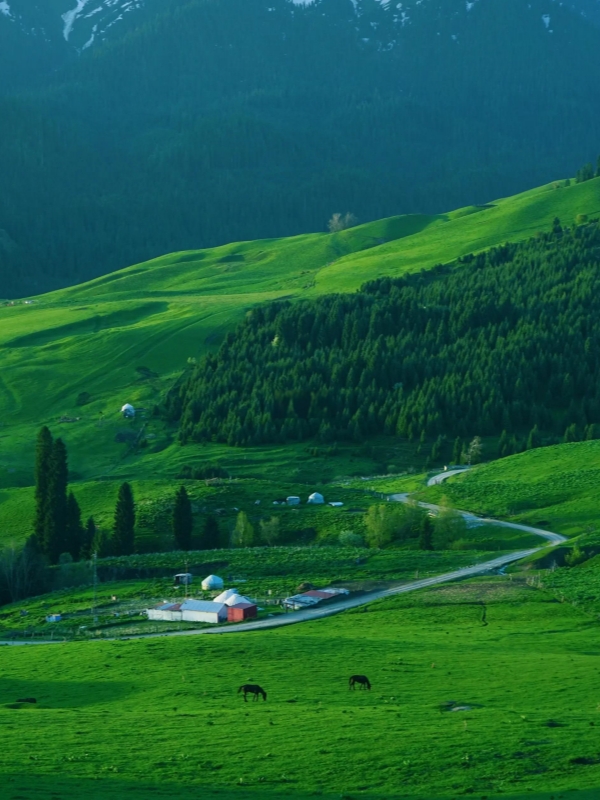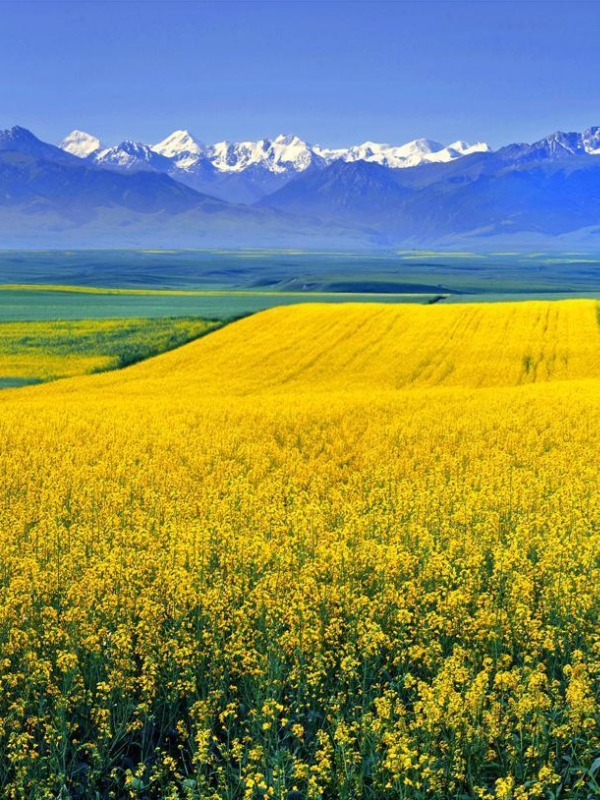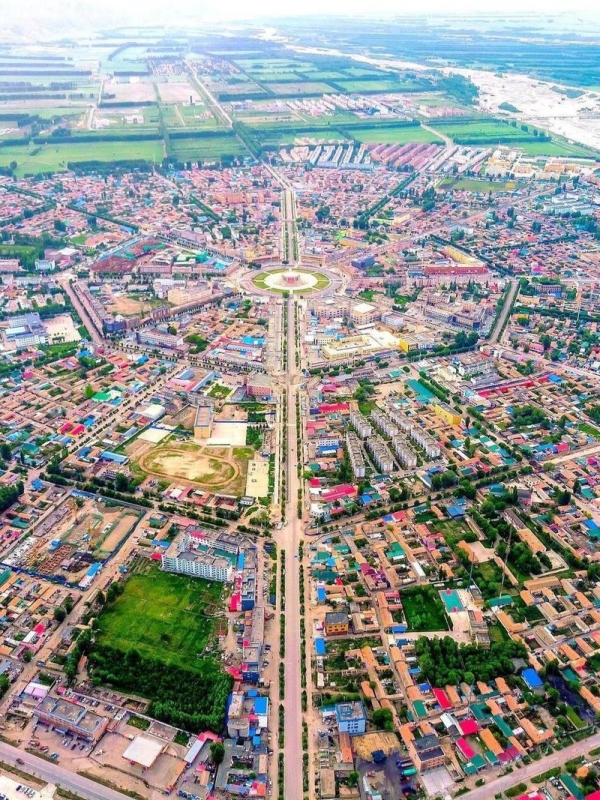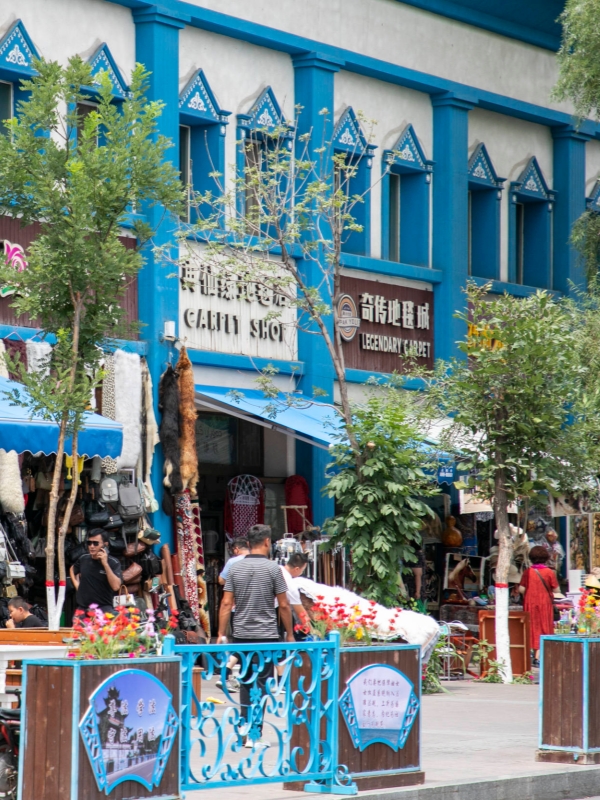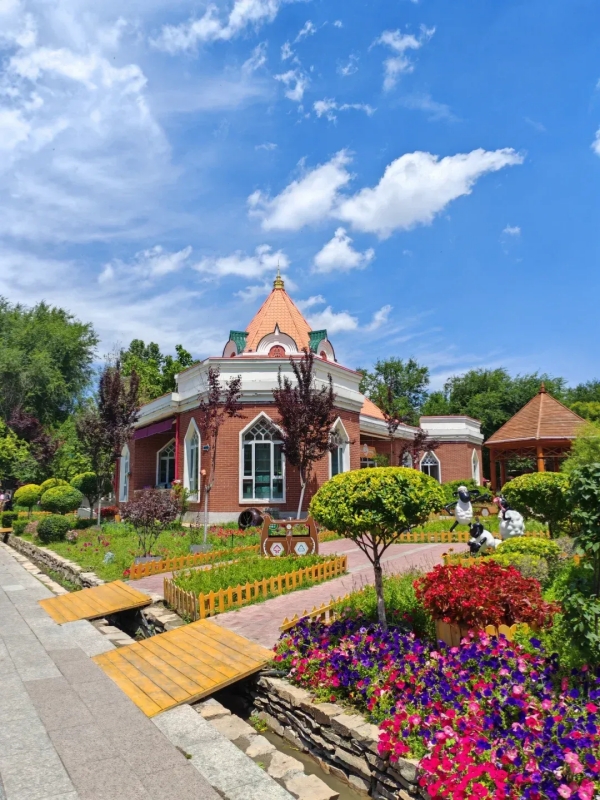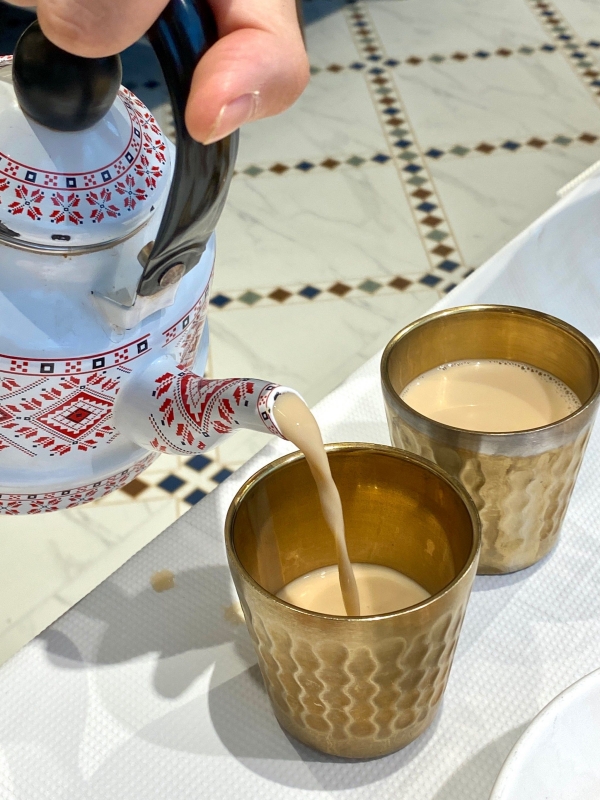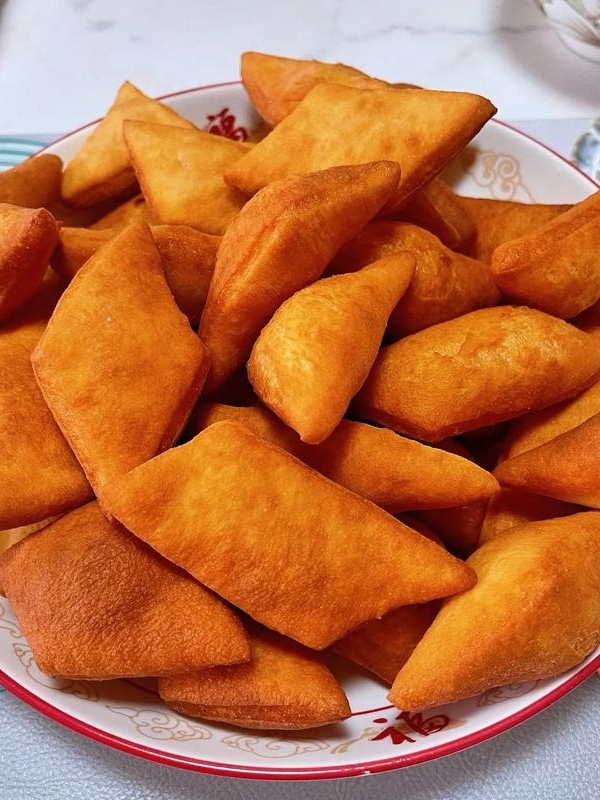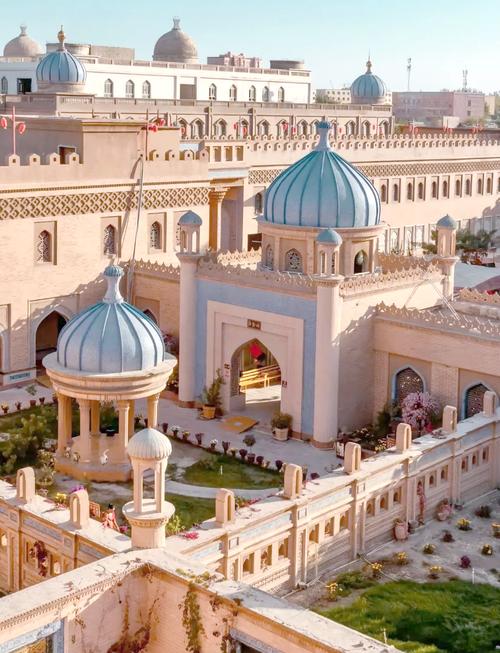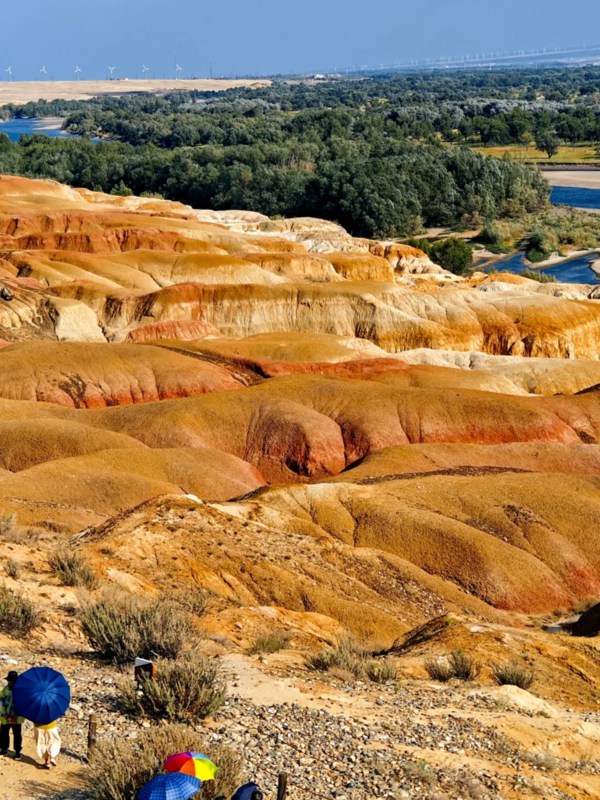
Sayram Lake in Yili
Yili (also spelled Ili) is a hidden gem nestled in a Tianshan Mountains valley—and it’s the real star of Xinjiang for many travelers. You’ve likely heard the local line: “You don’t know China’s size till you visit Xinjiang; you don’t know Xinjiang’s beauty till you visit Yili.” And it delivers: snow-capped peaks tower over endless grasslands, white yurts dot the slopes, and horse bells drift through alpine air. Here, iconic lakes reflect mountain views, vast grasslands hold nomadic traditions, and every corner feels like a perfect blend of natural wonder and cultural depth.
What makes Yili stand out from Kashgar or Turpan? It’s the authenticity—fewer crowds mean you’re not just watching culture, you’re living it: sipping salty Kazakh milk tea in a yurt, hiking ancient Silk Road trails, or wandering blue-painted Uyghur alleys. We’ve packed this guide with all the planning essentials too: unmissable natural spots, cultural deep dives, must-eat foods, and practical tips (when to go, how to get there). Ready to turn that Xinjiang dream into a plan? Let’s dive into the best things to do in Yili—every spot here is worth your time.
A Quick Overview of Yili
| Category | Details |
|---|---|
| 🏷️ Names & Translations | Official name "Yili Kazakh Autonomous Prefecture"; also spelled "Ili". "Yili/Ili" is universally recognized, with local dialect names less used. |
| 🗺️ Location | Northwestern Xinjiang, China; borders Kazakhstan westward, nestled between Tianshan Mountains' northern and southern branches. |
| 🌄 Geographical Environment | Centered on fertile Ili Valley (1,800-2,300m elevation); main landforms: alpine meadows, glacial lakes, river valleys. Temperate continental climate with distinct seasons. |
| 🏞️ Natural Landscapes | Key spots: Sayram Lake ("Atlantic's Last Tear"), Nalati/Kalajun Grasslands, Guozigou Valley, Zhaosu Rapeseed Sea. Glaciers, forests and alpine lakes scattered. |
| 👥 Ethnic Culture | Multicultural (Kazakh, Uyghur, Han, etc.). Preserved Kazakh nomadic culture; thriving Uyghur culture in Kazanqi District. |
| 🍜 Specialty Foods | Representative: salty Kazakh milk tea, kumis, hand-grabbed lamb, laghman, whole roasted lamb, Huocheng lavender ice cream. |
| ⚠️ Taboo Reminders | Mosque: remove shoes, modest dress. Yurt: no stepping on threshold, clockwise around stove. Ask permission before photographing locals/sites. Accept host's food politely. |
Connecting with Nature: Mirror Lakes and Epic Valleys
- Sayram Lake
- Guozigou Bridge
- Xiata Ancient Road
If you're the type who stops the car every five minutes to take photos of mountains, this section is for you. These spots showcase Yili at its most dramatic—think mirror-still lakes, valleys bursting with wild fruit trees, and ancient trails that'll make your legs burn in the best way.
Sayram Lake: Witnessing the Pure Blue of the "Atlantic's Last Tear"
Okay, so here's the deal with Sayram Lake. People call it "the Atlantic's last tear," which sounds dramatic until you learn the geography. This is literally the easternmost point where moisture from the Atlantic Ocean falls as rain after traveling thousands of kilometers across Eurasia. Kind of poetic when you think about it.
But forget the science for a second. What you actually need to know is this: Sayram Lake is the kind of blue that makes you question your own eyes. I arrived just after sunrise, and the water was so still it looked like someone had laid a mirror across the valley floor. Snow-capped peaks reflected perfectly on the surface. A few Kazakh yurts dotted the shoreline, with smoke curling up from morning cooking fires.
The lake sits at about 2,073 meters and stretches roughly 30 kilometers from one end to the other. You can drive the loop road around it, stopping wherever the view catches you. And trust me, it'll catch you a lot.
What you can do here:
- Drive the 90-kilometer scenic loop at your own pace
- Hire a horse and ride along the shoreline with a local Kazakh guide
- Spend a night in a traditional yurt—the stars out here are unreal
- Wake up early for sunrise. Like, really early. Before 7am early.
Guozigou Valley and Bridge: Crossing the Dramatic Contrast of Ancient Forest and Modern Engineering
You'll pass through Guozigou on the way from Yining to Sayram Lake, and I'm telling you now: don't just drive through. Stop.
The name means "Fruit Valley" in Chinese, and in spring, you'll understand why. Wild apple trees, apricots, walnuts—they all bloom across the mountain slopes in waves of white and pink. Even outside blossom season, though, the valley has this quiet drama to it. Steep forested hillsides. A river cutting through the bottom. And then, curving through all of it like a silver ribbon, the Guozigou Bridge.
This thing is 700 meters long and stands about 200 meters above the valley floor. It's part of China's Belt and Road highway network, and the contrast between ancient forest and modern engineering almost feels surreal. You're looking at thousand-year-old trees and a bridge that probably has better Wi-Fi than your apartment.
Xiata Ancient Road: Hiking the Silk Road Path Like an Ancient Pilgrim
Alright, this one's not for everyone. But if you're the kind of person who hears "ancient Silk Road trail" and immediately starts lacing up your hiking boots, Xiata might be the highlight of your trip.
This 120-kilometer route once connected the Ili Valley to southern Xinjiang, cutting right through the Tianshan Mountains. Legend has it that Xuanzang—the Tang Dynasty monk who inspired Journey to the West—walked this path on his pilgrimage to India. Whether that's true or not, I couldn't tell you. But standing at the trailhead, looking up at those peaks, it felt possible.
The full trek takes four to six days and crosses everything from alpine meadows to glacial rivers to a 3,600-meter mountain pass. The Muzhalte Glacier at the top stays frozen year-round, with ice walls reaching 20 meters thick. It's intense.
Venturing Inland: Experiencing Nomadic Life on the Vast Grasslands
- Nalati Grassland
- Kalajun Grassland
- Zhaosu Grassland & Rapeseed Flower Sea
Yili's grasslands aren't just pretty—they're some of the most significant alpine meadows on the planet. We're talking Argentina's pampas level. New Zealand highlands level. And unlike those places, you can still experience authentic nomadic culture here.
Nalati Grassland: Experiencing the Openness and Serenity of One of the World's Largest Alpine Meadows
There's a moment when you first arrive at Nalati where everything just... opens up. The road climbs, you round a bend, and suddenly there's nothing but green hills rolling toward snow-dusted peaks. Wildflowers everywhere. Horses grazing. A yurt or two in the distance, smoke rising from their chimneys.
Nalati Grassland where sky meets steppe and culture breathes is one of the four largest alpine meadows in the world. That's not tourism hype—it's geography. The grassland sits at about 1,800 meters elevation and has been home to Kazakh nomads for centuries. What makes it special isn't just the scenery, though. It's that this isn't a museum or a cultural performance. These are real families living their actual lives.
I spent an afternoon in a yurt with a Kazakh grandmother who spoke zero Mandarin. We communicated entirely through smiles and hand gestures while she taught me how to make milk tea. Brick tea, fresh yak milk, a pinch of salt. It sounds weird, I know. But after walking around in that mountain air all day, it was exactly what I needed.
Kalajun Grassland: Photographing the Wild, Undulating "Earth's Fingerprints" Landscape
If Nalati is the approachable, family-friendly grassland, Kalajun is its wilder, moodier sibling. The name means "black wilderness" in Kazakh, which might sound ominous, but the reality is more like... dramatic beauty? The hills here roll in these wave-like patterns that photographers have nicknamed "the earth's fingerprints."
Kalajun is about 175 kilometers from Yining, so it takes more effort to reach. That's exactly why it stays quieter than Nalati. The crowds thin out. The wilderness feels bigger. You might walk for an hour without seeing another tourist.
Don't miss these viewpoints:
- Flower Platform (Xian Hua Tai): The classic rolling-wave shot
- Falcon Platform (Lie Ying Tai): Higher up, sweeping valley views
- Kalajun Lake: Hidden alpine lake, requires some hiking
Zhaosu Grassland: Viewing the July Rapeseed Flower Seas and Ancient Wusun Kingdom Ruins
Every July, something magical happens in Zhaosu. The rapeseed flowers bloom. And I don't mean a few patches here and there—I mean entire valleys transformed into seas of gold, stretching toward snow-capped mountains under skies so blue they almost hurt to look at.
It's the kind of scene that makes you understand why painters invented landscape art.
But Zhaosu isn't just about the flowers. This plateau was once the heartland of the ancient Wusun Kingdom, and if you look carefully, you'll still find stone figures and burial mounds scattered across the grass. These things have stood here for over 2,000 years, watching over a land that feels genuinely forgotten by the modern world. Walking past them at sunset, with horses grazing nearby, you might catch yourself wondering who put them there and why.
Cultural Immersion: Uncovering Depth and Tradition in the Towns
- Tekes Bagua City
- Kazanqi Folk Tourism District
- Liuxing Street (Six Star Street)
Not everything in Yili involves hiking boots and sunscreen. Some of the most memorable things to do in Yili happen in towns and cities—wandering blue-painted alleyways, standing at the center of an eight-sided city, eating lamb skewers at a night market while vendors shout across the crowd.
Tekes Bagua City: Looking Down on the Unique Octagonal City with Zero Traffic Lights
Okay, here's a piece of trivia you can use at your next dinner party. There's a town in China that has zero traffic lights. Not a single one. And somehow, it never has traffic jams. The secret? The whole place was built in the shape of a Bagua—the eight-trigram symbol from Taoist philosophy. Streets radiate outward from the center in a perfect octagonal pattern.
I know. It sounds like something from a simulation. But Tekes is very real, and standing at the top of the central observation tower, looking down at the street pattern spreading beneath you like a giant compass... it's kind of mind-bending. The town actually holds the Guinness World Record for the largest complete Bagua city on Earth.
Beyond the layout, Tekes marks the westernmost extent of Taoist culture in China. It's also historically significant as the place where a Han Dynasty princess was sent to marry a Wusun king back in 105 BC. Layers of history everywhere.
Yining Core City Highlights: Experiencing the Intersection of Diverse Local Cultures
Don't overlook Yining in your rush to nature. The capital offers a fascinating window into the region's multicultural tapestry. Uyghur, Kazakh, Russian, and Han influences blend into something uniquely local.
Kazanqi Folk Tourism District: The largest Uyghur community in northern Xinjiang. Narrow streets painted in striking blue—earning comparisons to Morocco's Chefchaouen. "Kazanqi" means "pot makers" in Uyghur. Century-old courtyard houses sit alongside tea houses and bakeries. Explore by horse-drawn carriage (mache)—50 RMB per person, 30-40 minutes.
Yili River & Evening Stroll: The waterfront promenade comes alive each evening. Locals escape summer heat. Families picnic. Vendors sell lamb skewers and cold beer. The 2+ kilometer bridge offers excellent sunset views.
Liuxing Street (Six Star Street): Built in 1934 with a hexagonal radial layout—creating a star pattern from above. Architecture reflects Russian, Uzbek, and Uyghur influences. An open-air museum of Central Asian urban design.
Culinary Feast: Tasting the Classic Savory and Fresh Flavors
- Kazakh Milk Tea
- Borsak
- Whole Roasted Lamb
Yili's cuisine reflects its multicultural heritage. Lamb is king. But the region's most famous export might surprise you—salty milk tea.
Kazakh Milk Tea: Trying the Unique Nomadic Drink Made with Salty Brick Tea
Forget everything you know about milk tea. In Yili, milk tea is salty, made with brick tea, fresh cow or mare's milk, and a generous pinch of salt. It sounds strange to Western palates, but after a morning on the grasslands, this warm, savory drink is exactly what your body craves. The tea is traditionally served in shallow bowls alongside borsak (fried dough balls) for dipping.
For an even more adventurous experience, try kumis, fermented mare's milk with a slight fizz and tangy flavor. Nomadic cultures across Central Asia have consumed this probiotic drink for millennia, and in Yili you can try it straight from the source. The taste takes some getting used to, but it is an essential part of the Kazakh culinary tradition.
Must-Try Foods: Listing All the Unmissable Signature Dishes
| Dish | Description | Price Range |
|---|---|---|
| Kazakh Milk Tea | Salty, made with brick tea and fresh milk | 5-15 RMB |
| Kumis | Fermented mare's milk, slightly fizzy | 10-20 RMB |
| Hand-Grabbed Lamb | Boiled lamb eaten with hands, raw onions | 80-150 RMB |
| Laghman | Hand-pulled noodles with lamb stir-fry | 25-40 RMB |
| Whole Roasted Lamb | Open-fire roasted, serves 4-6 | 800-1500 RMB |
| Lavender Ice Cream | Huocheng specialty, floral flavor | 10-20 RMB |
💡 Pro Tip: Hit Hanren Street or Jiefang Road for night markets. Stalls open 7pm to midnight. Budget 50-100 RMB for a filling feast.
Perfect Planning: Best Times to Visit
Timing is everything. Visit the wrong month and you might miss lavender or find brown grasslands.
Seasonal Overview: A Month-by-Month Summary of Highlights and Temperatures
| Season | Months | Highlights | Temps |
|---|---|---|---|
| 🌸 Spring | April – May | Apricot blossoms, fruit tree blooms, greening grasslands | 10-25°C |
| ☀️ Summer | June – August | Peak grasslands, lavender, wildflowers | 20-33°C |
| 🍂 Autumn | Sept – Oct | Golden colors, fruit harvest, fewer crowds | 10-20°C |
| ❄️ Winter | Nov – March | Snow scenery, lowest prices, many closures | Below 0°C |
⚠️ Summer Warning: Book hotels 2+ weeks ahead during July-August. Prices can double. UV radiation is intense—bring SPF 50+ and a hat.
💡 Pro Tip: September-October is Yili's best-kept secret. Summer crowds disappear, prices drop, and landscapes turn gold.
Understand How to Reach the Region Efficiently and Comfortably
Direct Flight Access: Flying from Major Cities to the Central Airport
Yining Chabuchaer Airport (YIN) is a modern facility with direct flights from major Chinese cities including Beijing (4 hours), Shanghai (5 hours), Xi'an (3 hours), Chengdu (3.5 hours), and Guangzhou (5 hours). The most frequent connections are through Urumqi, with multiple daily flights taking about 1 hour. During summer peak season, flights book up quickly, so reserve early.
Insider Tip: Request a window seat on the left side of the plane when flying from Urumqi to Yining. On clear days, you will be treated to stunning aerial views of the snow-capped Tianshan Mountains. The airport is about 5 kilometers from downtown Yining, with taxi fares around 20-30 RMB.
Train Travel: Options for Taking the Railway from the Regional Capital
| Train Type | Duration | Notes |
|---|---|---|
| High-speed | 4-5 hours | Beautiful mountain scenery |
| Regular | 10-12 hours | Budget option |
Book via China Railway website or 12306 app.
Self-Driving Routes: Exploring the Possibilities and Limitations of a Road Trip
| Route | Duration | Notes |
|---|---|---|
| G30 Lianhuo Expressway | 7-8 hours | Fully paved |
| G217 Duku Highway | 10+ hours | Scenic but challenging, seasonal closures |
💰 Budget Tip: Car rental with driver costs 600-1000 RMB/day. International licenses aren't accepted in China—you need a Chinese license or hired driver.
Accommodation: City Hotels Versus Nomadic Yurt Experiences
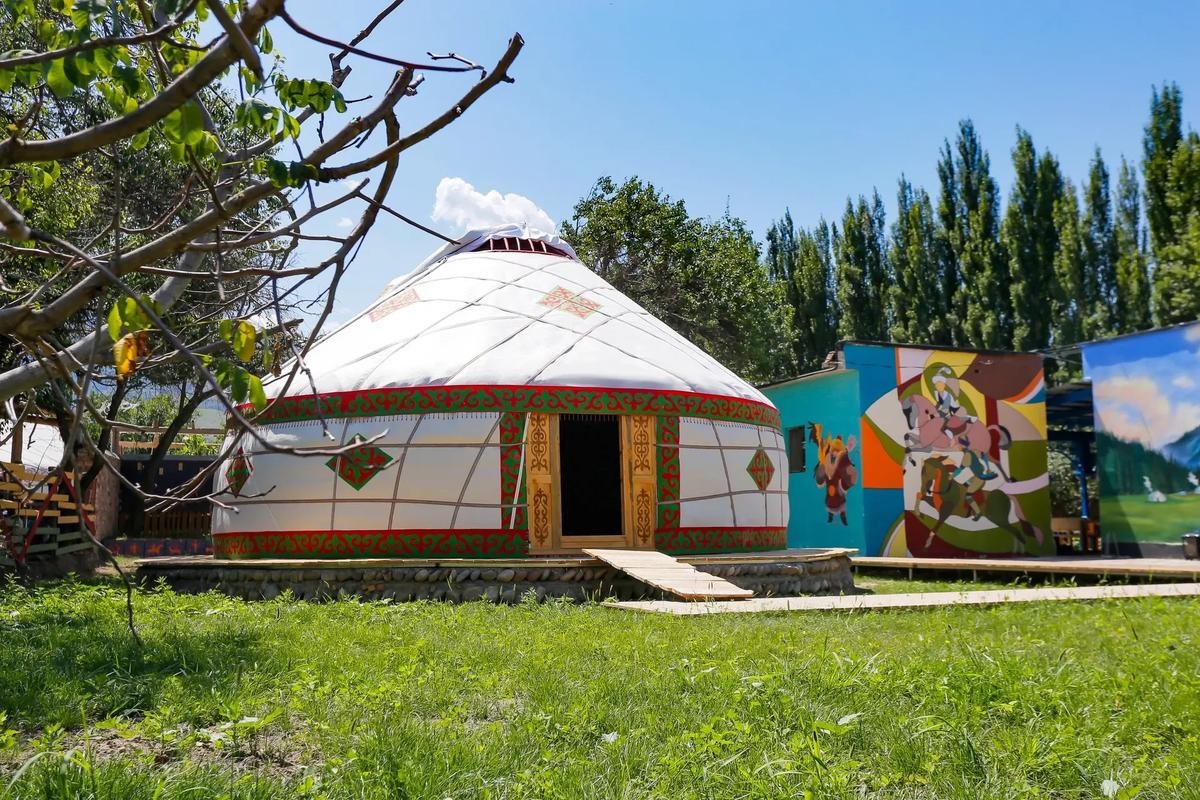
Kazakh Yurts
City Accommodation: Planning Your Itinerary Using the Main City as a Hub
Yining City makes the most practical base for exploring Yili, with the best selection of hotels, restaurants, and transportation connections. Most travelers spend 2-3 nights here, using it as a hub for day trips to Sayram Lake, Huocheng lavender fields, and other nearby attractions.
| Category | Price/Night | Notes |
|---|---|---|
| Budget | 100-200 RMB | Basic guesthouses |
| Mid-range | 200-400 RMB | 3-star hotels |
| Upscale | 400-800 RMB | 4-5 star hotels |
Best Areas:
- Jiefang Road: Central, close to night markets
- Yili River: Quieter, waterfront views
Yurt Overnight Stay: Experiencing the Most Authentic Nomadic Accommodation
For a truly immersive experience, spend at least one night in a traditional yurt on the grasslands. Both Nalati and Kalajun scenic areas offer yurt accommodations ranging from basic to surprisingly comfortable. Expect shared bathroom facilities, limited electricity, and basic bedding. What you get in return is an unforgettable night under the stars, surrounded by nothing but grass, mountains, and silence.
| Detail | Info |
|---|---|
| Price | 200-500 RMB/night |
| Facilities | Shared bathrooms, limited electricity |
| Locations | Nalati, Kalajun scenic areas |
💡 Pro Tip: Bring a sleeping bag liner for hygiene and warmth. Pack a flashlight for nighttime bathroom trips. Book ahead for July-August.
Essential Reading: Key Tips for First-Time Visitors
Packing List: Essential Items for Coping with Altitude and Temperature Swings
Packing for Yili requires preparation for dramatic weather swings. Even in summer, temperatures can vary by 15-20 degrees between morning and afternoon, and between valleys and mountain peaks. Here is your essential packing list:
| Item | Why |
|---|---|
| ☀️ Sunglasses, SPF 50+, hat | Intense UV at altitude |
| 🧥 Warm layers | 15-20°C swings between morning/afternoon |
| 🌧️ Packable rain jacket | Mountain weather changes fast |
| 👟 Sturdy walking shoes | Grassland trails |
| 💊 Medicine kit | Stomach meds, motion sickness pills |
| 💵 Cash (500-1000 RMB) | Weak signal in remote areas |
| 🔋 Power bank | Long sightseeing days |
Cultural Etiquette: A Guide to Respectful Interaction with Local Communities
Yili is a culturally diverse region where Kazakh, Uyghur, and Han Chinese communities live side by side. A little cultural awareness goes a long way in showing respect and building connections with locals. If visiting a mosque, remove your shoes before entering. Women should cover their heads and wear clothing that covers arms and legs.
Photography inside may be restricted. Ask before entering prayer halls, especially during prayer times. When entering a yurt, never step on the threshold. Walk around the stove in the center clockwise. Accept food and drink offered by your hosts, as refusing is considered impolite. Even if you cannot finish everything, taking a small taste shows respect.
Safety and Health: Reminders about Altitude Sickness, Weather, and Checkpoints
Altitude: 1,800-2,300m. You may feel slightly breathless. Take it easy Day 1.
Weather: Check forecasts. Prepare for rain even on sunny mornings.
Wildlife: Keep distance from shepherd dogs. Don't startle grazing animals.
Documentation: Carry passport. Occasional highway checkpoints.
Frequently Asked Questions: Addressing All Your Travel Concerns
Q: Is Yili worth visiting? How many days should I spend?
A: Absolutely. Yili consistently ranks among the most beautiful regions in China, yet remains far less crowded than famous destinations like Guilin or Zhangjiajie. For first-time visitors, 3-5 days covers the highlights including Sayram Lake, Nalati Grassland, and Yining City. For a comprehensive trip that includes Kalajun, Zhaosu, and seasonal attractions like lavender or apricot blossoms, plan 7-10 days.
Q: What is the best time to visit Yili?
A: June to October offers the best combination of weather and scenery. Within this window, each month has unique highlights: April for apricot blossoms, June for lavender, July for rapeseed flowers and the Horse Festival, and September-October for autumn colors and fewer crowds. Avoid November through March unless you specifically want a winter experience, as many attractions close and roads may be impassable.
Q: How do I get to Yili from Urumqi?
A: You have three main options. Flying takes about 1 hour with multiple daily flights. The high-speed train takes 4-5 hours and offers nice scenery. Driving takes 7-8 hours via the Lianhuo Expressway. For most travelers, flying or taking the train is recommended. If you want to drive the scenic Duku Highway, allow at least 10 hours and confirm road conditions in advance.
Q: Can I visit Yili and Kashgar in one trip?
A: Yes, but be aware they are over 1,000 kilometers apart with no direct connection. A combined trip requires at least 10-14 days. The most efficient route is: fly into Urumqi, travel overland to Yili (5-6 days), then fly from Yining to Kashgar (2-hour flight), spend 3-4 days exploring Kashgar, and fly out. Alternatively, you can drive the southern route through Kuqa, adding several more days but passing through spectacular scenery.
Q: Is Yili safe for foreign tourists?
A: Yes, Yili is very safe. Crime rates are low, and locals are genuinely welcoming to visitors from abroad. The main challenges are practical rather than safety-related: limited English signage, language barriers in rural areas, and occasional ID checkpoints on highways. Carry your passport at all times, download a translation app like Google Translate (with offline Chinese language pack), and you will be fine.
Q: What makes Yili different from other Xinjiang destinations?
A: While Turpan is famous for deserts and ancient ruins, and Kashgar for Silk Road history and Uyghur culture, Yili offers something entirely different: lush green landscapes, alpine lakes, and Kazakh nomadic traditions. The Chinese nickname for Yili is "Jiangnan beyond the Great Wall," comparing it to the water-rich regions south of the Yangtze River. It completely defies expectations of what Xinjiang looks like, and that surprise is part of its charm.
Q: Do I need to book tours or can I explore independently?
A: Both approaches work. Independent travel is entirely possible with a hired car and driver, which gives you maximum flexibility to stop when and where you want. However, Yili's attractions are spread across a vast area with limited public transportation between them. For travelers without private transport, joining a small group tour (usually 4-8 people) is practical and social. Many hotels in Yining can arrange day trips or multi-day tours with English-speaking guides.
